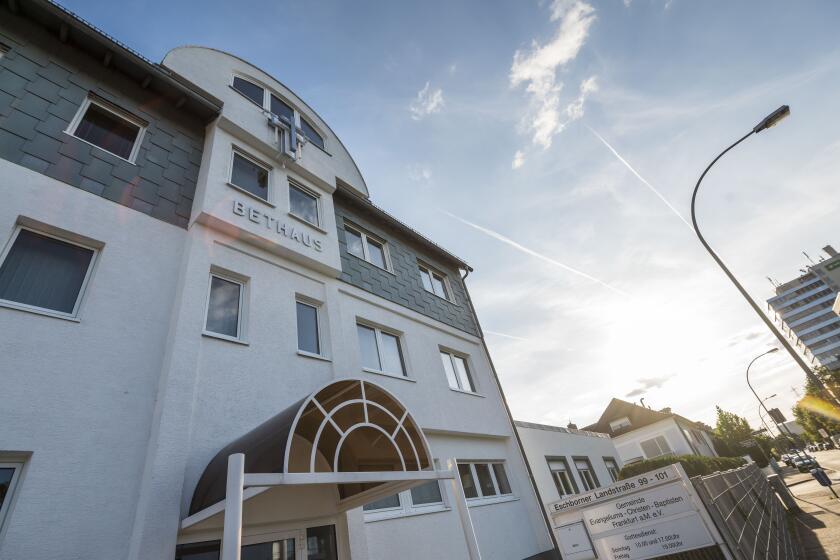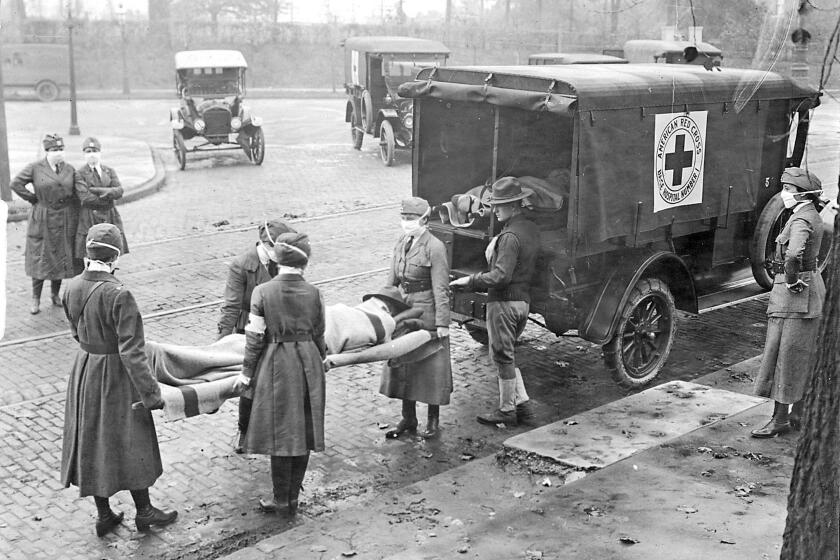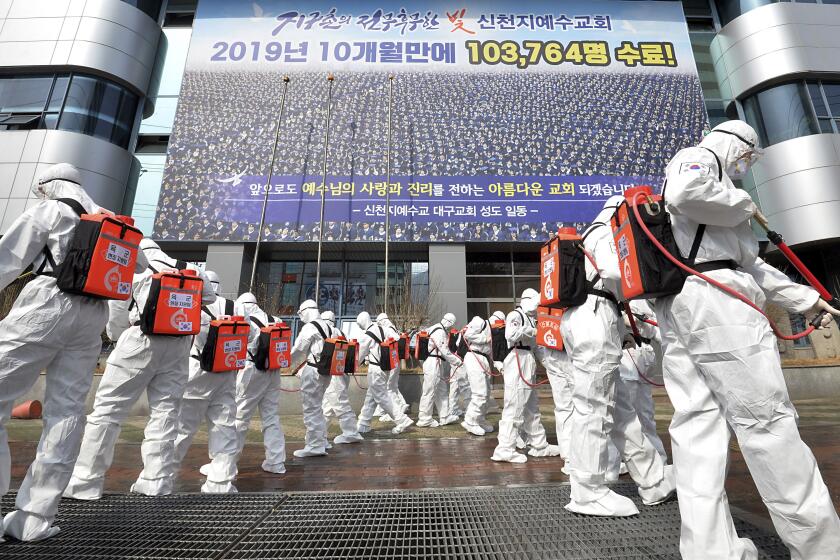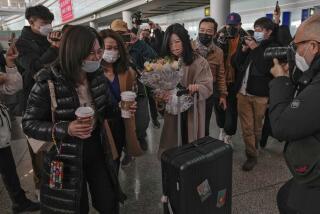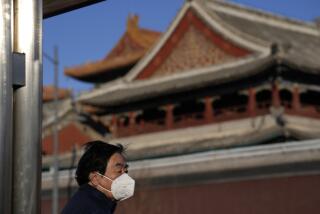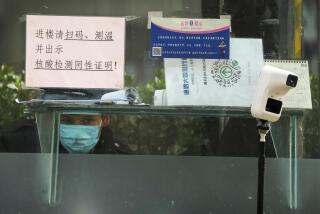Coronavirus lockdowns ease across Europe and Asia, with caveats and hopes of tourists
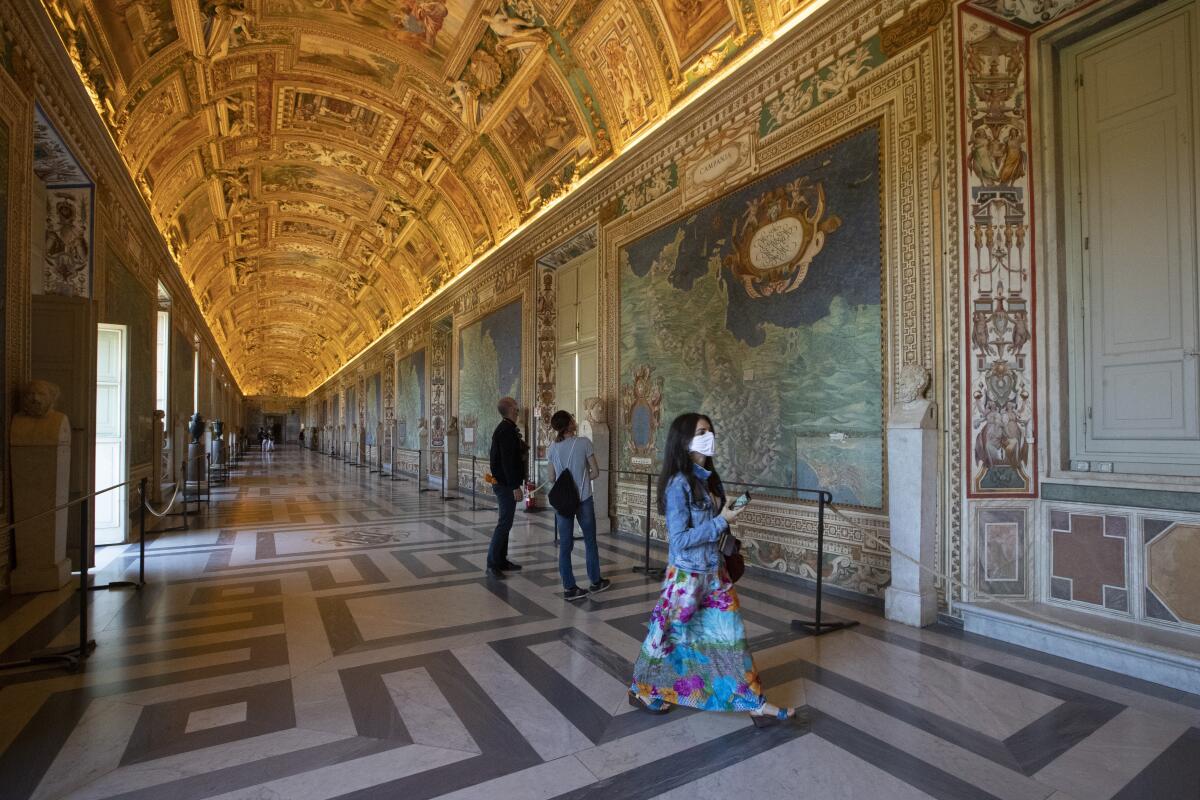
- Share via
ROME — The first day of June saw coronavirus restrictions ease from Asia to Europe as the Colosseum reopened its ancient doors in Rome, ferries restarted in Bangladesh, golfers played in Greece, students returned to class in Britain and Dutch bars and restaurants welcomed hungry, thirsty patrons.
Countries around the Mediterranean Sea tentatively kicked off a summer season where tourists could bask on their famously sunny beaches while still being protected by social distancing measures from a contagion that’s still on the march around the world.
“We are reopening a symbol — a symbol of Rome, a symbol for Italy,” said Alfonsina Russo, director of the Colosseum’s archaeological park, adding that the site was “restarting in a positive way, with a different pace, with a more sustainable tourism.”
Greece lifted lockdown measures Monday for hotels, campsites, open-air cinemas, golf courses and public swimming pools, while beaches and museums reopened in Turkey, and bars, restaurants, cinemas and museums came back to life in the Netherlands.
“Today, we opened two rooms and tomorrow three. It’s like building an anthill,” Athens hotel owner Panos Betis said as employees wearing face masks tidied a rooftop restaurant and cleaned a window facing the ancient Acropolis. “We can’t compare the season to last year. We were at 95% capacity. Our aim now is to hang in there till 2021.”
A long line of masked visitors snaked outside the Vatican Museums, which include the Sistine Chapel, as they reopened for the first time in three months. Italy is eager to reboot its tourism industry, which accounts for 13% of its economy.
The Vatican Museums’ famous keyholder — the “clavigero” who holds the keys to all the galleries on a big ring on his wrist — opened the gate in a sign both symbolic and literal that the museums were back in business.
A leader in dealing with the coronavirus, Germany has reopened its houses of worship — but a new coronavirus outbreak shows that risks remain.
Still, strict crowd-control measures were in place at both landmarks: Visitors needed reservations to visit, their temperatures were taken before entering and masks were mandatory.
“Having the opportunity to see the museums by making a booking and not having to wait in line for three hours is an opportunity,” said visitor Stefano Dicozzi.
The Dutch relaxation of coronavirus rules took place on a major holiday with the sun blazing, raising immediate fears of overcrowding in popular beach resorts. The new rules let bars and restaurants serve up to 30 people inside if they keep social distancing, but there’s no standing at bars and reservations are necessary.
Britain, which with more than 38,500 dead has the world’s second-worst death toll behind the United States, eased restrictions despite warnings from health officials that the risk of spreading COVID-19 was still too great. Some elementary classes reopened in England and people could now have limited contact with family and friends, but only outdoors and with social distancing.
In Asia, Bangladesh restarted bus, train, ferry and flight services Monday, hoping that a gradual reopening will revive an economy in which millions have become jobless. Traffic jams and crowds of commuters clogged Manila as the Philippines tried to kick-start its economy.
Nearly 6.2 million coronavirus infections have been reported worldwide, with over 372,000 people dying, according to a tally by Johns Hopkins University. The true death toll is believed to be significantly higher, since many died without ever being tested.
Health experts aren’t seeing any signs that the coronavirus will be as catastrophic as the worst pandemic in recent memory: the 1918 Spanish flu.
The U.S. has seen nearly 1.8 million infections and over 104,000 deaths in the pandemic, which has disproportionately affected racial minorities in a nation that does not have universal healthcare.
South Korea and India offered cautionary tales Monday about just how hard it is to halt the virus.
South Korea reported a steady rise in cases around Seoul. Hundreds of infections have been linked to nightspots, restaurants and a massive e-commerce warehouse near Seoul. The resurgence is straining the country’s ability to test patients and trace their contacts.
“We have been seeing an increased number of high-risk patients who have been infected through family members or religious gatherings,” said Jeong Eun-kyeong, director of the Korea Centers for Disease Control and Prevention. “There’s a particular need for people over 65, pregnant women and those with chronic medical conditions to be alert.”
Incheon, a port city west of Seoul, said Monday it’s considering banning gatherings at 4,200 churches and other religious facilities.
Korean religious sect with high coronavirus rate values secrecy
In India, cases increased rapidly, but it still eased restrictions Monday on shops and public transport in more states. Subways and schools remain closed as experts said India is still far from reaching the peak of its outbreak. The government eased the lockdown to help millions of day laborers who have lost their jobs and are unable to feed their families.
China, where the pandemic originated late last year, reported 16 new cases Monday, all travelers from abroad. Much of China has already reopened for business, and Monday saw classes restart in middle and high schools. Kindergartners and fourth- and fifth-graders will be allowed back next week.
More to Read
Sign up for Essential California
The most important California stories and recommendations in your inbox every morning.
You may occasionally receive promotional content from the Los Angeles Times.
